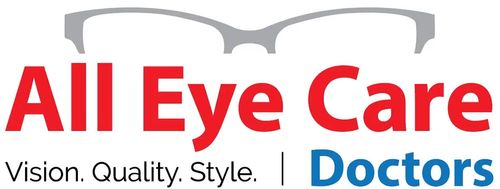
Myopia, or nearsightedness, is an increasingly common concern in pediatric eye care and is characterized by difficulty seeing objects at a distance. It has been on the rise globally among children and is far too common for many of today’s youths. Thankfully, breakthroughs in technology and medicine have opened new avenues for managing this condition before it takes its toll on growing kids.
One such innovation is MiSight, the first FDA-approved treatment designed to slow myopia progression in kids. We’ll look at the intricacies of MiSight, its significance in myopia management, and how it’s changing the landscape of children’s eye health. From parents to caregivers and doctors, you’ll learn why this game-changing development is trusted by the FDA and promises to change the landscape of vision forever.
MiSight: A Revolutionary Approach to Myopia Management
MiSight is a game-changing innovation from CooperVision that’s making waves in pediatric eye care. Specifically designed for myopia control, MiSight 1 Day contact lenses are FDA-approved to slow myopia progression in children aged 8-12. These child-friendly daily disposable lenses have been shown to significantly reduce the progression of nearsightedness, empowering children to take control of their myopia. The MiSight 1-day clinical trial is recognized as the longest multisite study in myopia control, providing valuable insights into the effectiveness of this innovative treatment. Whether comparing MiSight to other treatments or exploring in-depth guides on myopia management, it’s clear that MiSight is setting a new standard in the field of pediatric eye health.
The Science Behind MiSight Lenses: Dual-Focus Technology Explained
The science behind MiSight lenses is rooted in its innovative design and approach to addressing myopia. Unlike typical corrective lenses, MiSight lenses don’t just correct the refractive error that causes nearsightedness — they also work to slow the progression of myopia itself.
Central to the function of MiSight lenses is the dual-focus technology. The lens has two parts: one corrects nearsightedness, improving distance vision, while the other features concentric rings designed to focus some of the light in front of the retina. This aspect of the design is crucial, as it helps to reduce the stimulus for myopia progression by slowing eye elongation.
This approach to myopia management has been extensively studied, with MiSight lenses being the subject of the longest multisite study in myopia control. Over several years, these studies have provided valuable insights into the effectiveness of MiSight lenses in slowing the progression of juvenile-onset myopia. Additionally, current scientific evidence supports the use of MiSight contact lenses as an adequate treatment for controlling myopia in children and young adults.
MiSight vs. Orthokeratology: Comparing Myopia Management Techniques
When it comes to managing myopia in children, both MiSight lenses and Orthokeratology (Ortho-K) present effective solutions, yet they operate on different principles and offer unique advantages.
MiSight contact lenses, as we’ve discussed, use innovative dual-focus technology to slow the progression of myopia. They are daily disposable soft lenses, offering convenience and reducing the risk of infection associated with longer-wear lenses. Their design allows for immediate vision correction and myopia control simultaneously.
On the other hand, Ortho-K is a non-surgical procedure that uses specially designed rigid gas permeable (RGP) contact lenses to reshape the cornea during sleep. This temporary reshaping allows for clear vision during the day without the need for glasses or contact lenses. Ortho-K has been shown to be effective in slowing myopia progression, similar to MiSight. However, it requires a higher degree of maintenance and care, and there’s a learning curve for children in handling and caring for the lenses.
It’s always best to consult with eye care professionals to determine the most suitable option for each case.
The Benefits of MiSight 1-Day Contact Lenses
Firstly, MiSight lenses have been clinically proven to slow the progression of myopia in children aged between 8 to 12 years. This is critical because unchecked myopia can lead to severe eye health issues later in life. Studies have shown that MiSight lenses can reduce the speed of myopia progression by up to 59%.
MiSight also provides numerous additional benefits for users. They include:
- Ease of Use and Hygiene: As daily disposable lenses, MiSight lenses eliminate the need for cleaning and storage, reducing the risk of infection and simplifying lens care – an important factor for children.
- Comfortable to Wear: MiSight lenses are designed with children’s comfort in mind, ensuring they can be worn all day without discomfort.
- No Impact on Close-Up Activities: The design of MiSight lenses does not influence accommodation or binocular vision function. This means they won’t interfere with close-up activities like reading or using digital devices.
- Clear Vision: MiSight lenses correct myopic ametropia, providing clear visual acuity while they are worn.
Starting Myopia Management Early with MiSight
Managing myopia early with MiSight 1-Day contact lenses can significantly slow the progression of myopia and prevent potential eye health issues later in life. These breakthrough lenses offer a convenient, effective, and child-friendly solution to a common vision issue that plagues a large number of children.
At All Eye Care Doctors, we are committed to providing comprehensive eye exams and treatments that include cutting-edge options like MiSight. Our experienced optometrists will guide you and your child and provide the best possible care.
Contact us today to schedule an appointment and learn more about how MiSight 1-Day contact lenses can benefit your child.

